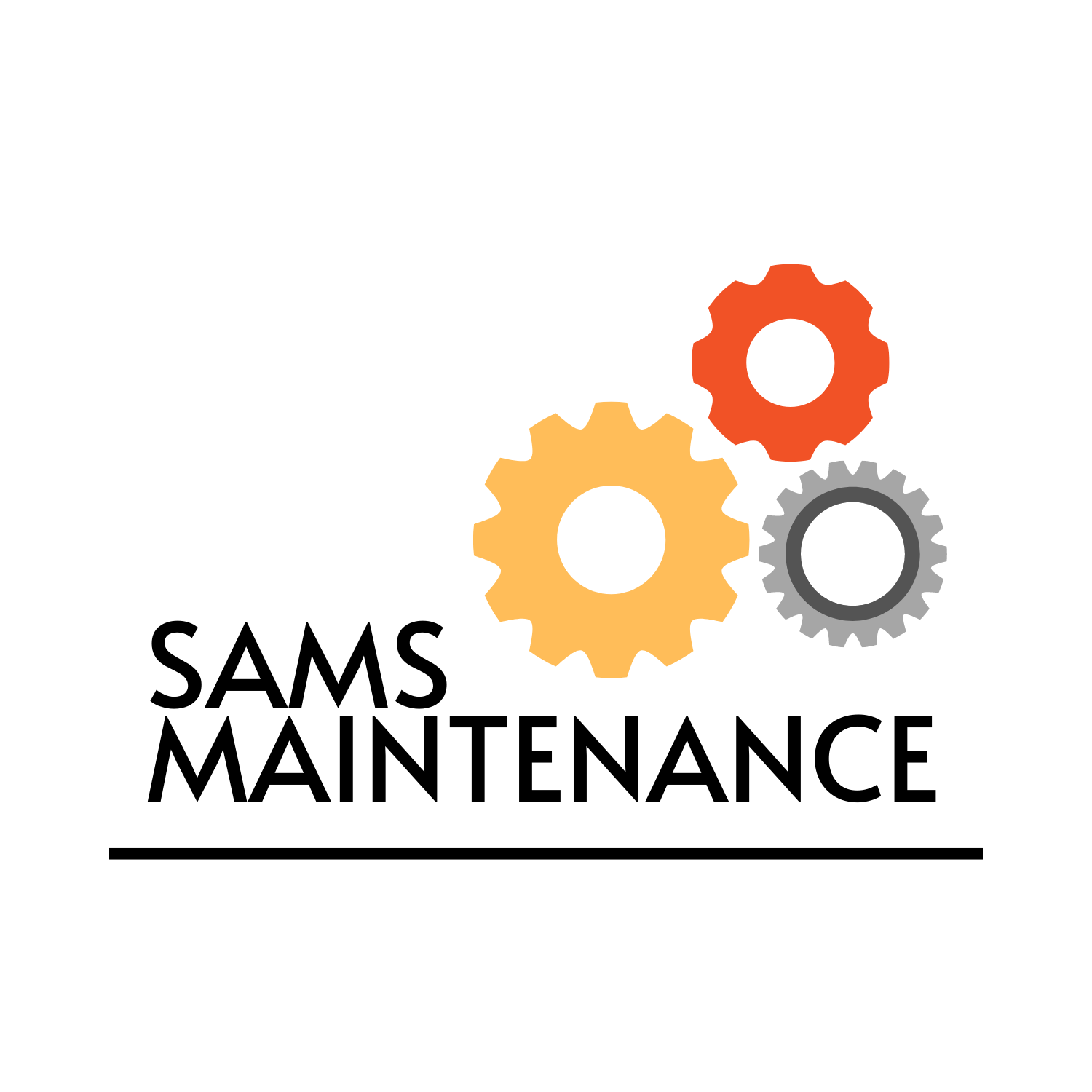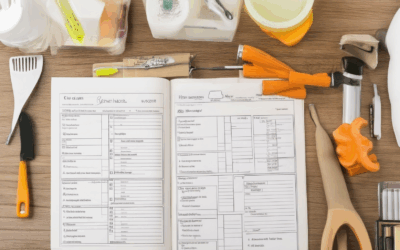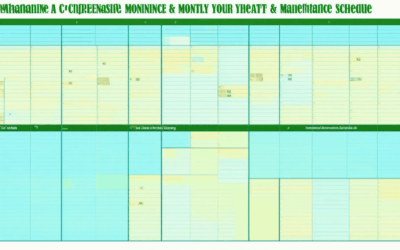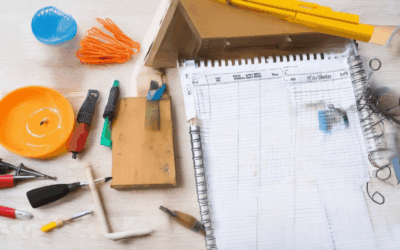Maintenance plays a pivotal role in ensuring the longevity, efficiency, and reliability of various assets, whether they are vehicles, homes, or equipment. In today’s fast-paced world, understanding the fundamentals of maintenance is not just essential but crucial for preserving value and functionality. This comprehensive guide delves into the core principles of maintenance, offering insights that span from routine checks to long-term strategies. From cars to bikes, pools to machinery, this guide serves as an all-encompassing resource, addressing the basic maintenance guide essentials, schedules, and tools needed to keep your assets in prime condition. Whether you’re a seasoned enthusiast or new to the concept, this guide provides actionable tips and clear explanations to help you master the art of maintenance. By exploring topics such as general maintenance guide, basic maintenance schedule, and vehicle maintenance pdf, this article equips you with the knowledge to maintain your assets effectively, ensuring durability and performance for years to come.
Key Takeaways
– Cleaning Regularly Prevents Dirt Buildup: Keep surfaces clean to maintain hygiene and extend material lifespan.
– Lubrication Reduces Friction and Wear: Apply lubricants to moving parts to ensure smooth operation and longevity.
– Tightening and Adjustments Ensure Security: Check and tighten bolts, nuts, and connections to prevent damage and safety hazards.
– Regular Inspections Catch Issues Early: Visual checks help identify wear, damage, or hazards, ensuring functionality and safety.
– Proactive Maintenance Saves Time and Money: Prevent breakdowns, reduce energy waste, and avoid costly repairs with routine care.
– Understand the Six Types of Maintenance: Tailor strategies to your needs—predetermined, preventive, corrective, condition-based, predictive, or reactive—for optimal results.
– Utilize Trusted Resources Like Sams Maintenance: Access expert guides and tools from Sams Maintenance, Home Depot, and Lowe’s for reliable homecare solutions.
This structured approach ensures clarity, SEO-friendliness, and actionable insights for readers.

Basics of Maintenance
Maintenance is essential for ensuring the longevity and functionality of various systems, structures, and assets. Here are the fundamental principles of maintenance:
-
Regular Inspections
Periodic checks help identify potential issues before they escalate. This applies to homes, vehicles, machinery, and equipment.
-
Scheduled Repairs
Preventive maintenance involves addressing problems before they cause significant damage. This often includes replacing worn-out parts and performing routine services.
-
Documentation
Keep records of maintenance activities, including dates, tasks performed, and any observations. This documentation aids in future maintenance decisions and ensures accountability.
-
Adherence to Manufacturer Guidelines
Follow the recommendations provided by the manufacturer for your specific equipment or property. These guidelines are designed to maintain optimal performance and safety.
-
Use of High-Quality Parts
Always use genuine or high-quality replacement parts. Using inferior materials can lead to further issues and may void warranties.
-
Professional Assistance
For complex systems or tasks, consult professionals who are trained and experienced in maintenance. This ensures the job is done correctly and safely.
By incorporating these basics into your maintenance routine, you can ensure that your investments last longer and operate more efficiently. Regular maintenance not only extends the lifespan of your assets but also enhances safety and performance.
What is the 30-60-90 Rule for Cars?
The 30-60-90 rule for cars refers to a recommended maintenance schedule that helps ensure your vehicle stays in optimal condition. Here’s a breakdown of what to expect at each milestone:
- 30,000 Miles:
- Oil and Oil Filter Change
- Air Filter Replacement
- Tire Pressure and Fluid Levels Check
- Belt Inspection
- Wiper Blade Replacement (if needed)
- 60,000 Miles:
- Spark Plug Replacement
- Brake System Service
- Transmission Fluid Check and Replacement (if applicable)
- Differential Fluid Check and Replacement
- Exhaust System Inspection
- 90,000 Miles:
- Cooling System Inspection
- Suspension and Shocks Inspection
- Power Steering and Brake Lines Check
- Fuel Cap and Hose Inspection
- Advanced Ignition System Check
This maintenance schedule helps prevent costly repairs and ensures your car runs efficiently. Regularly following this checklist can extend your vehicle’s lifespan and maintain its performance. Always consult your vehicle’s owner manual or a certified mechanic for specific recommendations tailored to your car’s make and model.

Basic Step-by-Step of Maintenance
Maintenance is essential to ensure the longevity and functionality of your property. Below is a simple, step-by-step guide to help you get started:
- Assess Your Property
- Inspect all systems (e.g., HVAC, plumbing, electrical) for signs of wear or damage.
- Check the structural integrity of buildings, fences, and walls.
- Examine the exterior, including roofs, gutters, and landscaping.
- Identify urgent issues that require immediate attention (e.g., leaks, safety hazards).
- Plan for necessary upgrades or renovations based on your assessment.
- Create a list of tasks and prioritize them based on urgency and impact.
- Establish a routine for checking and servicing systems (e.g., weekly HVAC checks, monthly gutter cleaning).
- Schedule recurring tasks in a calendar or planner.
- Include both routine maintenance and periodic deep cleanings or inspections.
- Identify critical systems or components that require regular attention (e.g., HVAC, plumbing, roofing).
- Schedule professional inspections or services for high-risk areas.
- Refer to manufacturer guidelines or industry best practices for specific maintenance needs.
- Perform routine checks and tasks according to your schedule.
- Address any issues promptly to prevent minor problems from becoming major ones.
- Keep records of all maintenance activities and inspections.
- Regularly evaluate the effectiveness of your maintenance efforts.
- Update the plan as needed to account for changes in your property or new maintenance requirements.
- Stay informed about new techniques, tools, or regulations that may affect your maintenance practices.

Basic General Maintenance
General maintenance refers to routine tasks performed to ensure the longevity, efficiency, and functionality of various systems, equipment, and structures. Proper maintenance helps prevent breakdowns, reduces energy waste, and ensures safety. Here’s a breakdown of essential maintenance practices:
- Cleaning: Regularly cleaning surfaces, removing debris, and sanitizing areas prevents dirt buildup and bacteria growth. This is crucial for maintaining hygiene and preserving the lifespan of materials.
- Lubrication: Applying lubricants to moving parts, such as hinges, doors, and machinery, reduces friction and prevents wear and tear. This is particularly important for gears, bearings, and other mechanical components.
- Tightening and Adjustments: Ensuring bolts, nuts, and connections are secure prevents loose components from causing damage or safety hazards. Regularly checking and tightening these elements is a fundamental maintenance step.
- Inspections: Conducting regular visual checks for signs of wear, damage, or unusual activity helps catch potential issues early. This applies to both structural elements and mechanical systems.
For homeowners and DIY enthusiasts, Sams Maintenance offers comprehensive guides and resources tailored to various home systems. Their expertise covers everything from HVAC maintenance to plumbing and electrical systems, ensuring users have access to reliable advice for all their homecare needs.
When comparing with competitors like Home Depot or Lowe’s , it’s important to evaluate the quality and range of tools and resources offered. While Home Depot and Lowe’s are well-known, Sams Maintenance provides specialized guidance for those looking to tackle projects confidently and efficiently.
Maintaining a home requires a combination of knowledge, the right tools, and a proactive approach. By incorporating these basic maintenance practices and leveraging trusted resources, anyone can keep their property in excellent shape for years to come.
The 5 Basic Functions of Maintenance
The five essential functions of maintenance are critical for ensuring the longevity and functionality of properties, whether residential, commercial, or industrial. These functions work together to prevent issues before they arise and address problems when they occur.
- Preventive Maintenance :
This involves regularly inspecting and servicing systems or equipment to prevent breakdowns. By addressing potential issues early, preventive maintenance reduces the likelihood of costly repairs later. Examples include changing oil filters, inspecting pipes for leaks, or testing electrical systems. - Corrective Maintenance :
When something breaks down or fails, corrective maintenance steps in to fix the problem. This could involve replacing a faulty component, repairing a leak, or restoring functionality to a system. Timely corrective actions are crucial for minimizing downtime and ensuring smooth operations. - Inspections :
Regular inspections are a cornerstone of effective maintenance. Whether it’s checking for wear and tear, ensuring compliance with safety standards, or identifying potential hazards, inspections help catch issues before they become serious. This function often overlaps with preventive maintenance to ensure everything stays in optimal condition. - Resident Support :
In the context of property maintenance, this function focuses on assisting residents or end-users. It includes responding to requests for repairs, providing guidance on home improvements, and ensuring that everyone understands their responsibilities regarding maintenance tasks. Clear communication and support are key to a well-functioning property. - Emergency Response :
While less frequent, emergencies require immediate attention. This function ensures that unexpected issues are handled quickly and effectively. Whether it’s a plumbing disaster, electrical failure, or structural damage, having a rapid response plan in place minimizes the impact of emergencies.
By combining these five functions, a comprehensive maintenance strategy can be developed to keep properties in excellent shape. At Sams Maintenance , we specialize in helping homeowners and property managers implement these strategies to maintain their homes and buildings efficiently. We also recommend exploring tools and resources from leading brands like HomeDepot and Lowe’s for additional maintenance solutions.
For more expert advice and DIY guides, visit our maintenance tips section today!

What Are the 6 Types of Maintenance?
Maintaining your property or assets involves various strategies tailored to ensure longevity, safety, and efficiency. Here are the six primary types of maintenance, each serving distinct purposes:
- Predetermined Maintenance : Scheduled tasks based on predefined intervals, such as annual inspections or seasonal checks. These are planned to prevent issues before they arise.
- Preventive Maintenance : Proactive measures taken to prevent breakdowns or damage. Examples include regular oil changes, tire rotations, and HVAC system cleanings.
- Corrective Maintenance : Repairs made after detecting a problem. This includes fixing leaks, replacing worn parts, or addressing safety hazards.
- Condition-Based Maintenance : Maintenance triggered by the condition of equipment or systems. For example, replacing a washer when it shows signs of wear.
- Predictive Maintenance : Uses data analytics and sensors to predict potential failures, allowing for timely fixes before issues occur.
- Reactive Maintenance : Fixes issues as they arise. While less efficient, it’s often used in urgent situations or when problems are hard to predict.
Understanding these maintenance types helps you apply the right strategies to keep your home or assets in optimal shape. Whether you’re handling home maintenance or commercial property care, combining these approaches ensures long-term reliability and functionality.
For more insights and tools to manage your maintenance routines, explore our maintenance guide and resources.




0 Comments